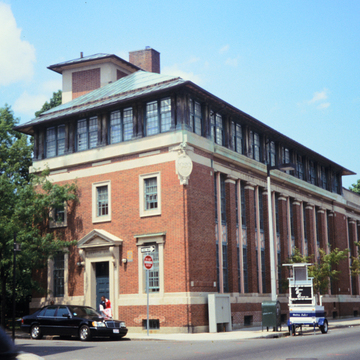You are here
Rosa Parks Day Care Center (Health Unit No. 5, George R. White Fund)
Upon his death, philanthropist George R. White donated a fund that enabled the city to construct seven health care buildings in congested neighborhoods of Boston. Coolidge, Shepley, Bulfinch and Abbott or its predecessor firm of Coolidge and Shattuck designed all seven in the Georgian Revival style between 1924 and 1933. All but one still stand, the others being located at 39–41 N. Margin Street, North End (1924); 75 Paris Street, East Boston (1926); 133 Dorchester Street, South Boston (1927); 75 High Street, Charlestown (1928–1929); and 20 Whittier Street, Roxbury (1932–1933). Charles A. Coolidge, who provided the continuity between these two firms, had considerable experience in hospital design.
Health Unit No. 5, now called the Rosa Parks Day Care Center, is the most architecturally distinctive of the group, its two-story red brick and limestone, Georgian Revival mass is topped by a recessed story of copper and glass under a hipped roof. Although primarily built as infirmaries offering medical and dental care, these buildings also provided classrooms and auditoriums, as well as rooms for health care workers that were sent out into the neighborhoods. The third floor of the Health Unit No. 5 offered a sunroom with glass on all four sides. The building was extended on the rear in 1932.
Writing Credits
If SAH Archipedia has been useful to you, please consider supporting it.
SAH Archipedia tells the story of the United States through its buildings, landscapes, and cities. This freely available resource empowers the public with authoritative knowledge that deepens their understanding and appreciation of the built environment. But the Society of Architectural Historians, which created SAH Archipedia with University of Virginia Press, needs your support to maintain the high-caliber research, writing, photography, cartography, editing, design, and programming that make SAH Archipedia a trusted online resource available to all who value the history of place, heritage tourism, and learning.











